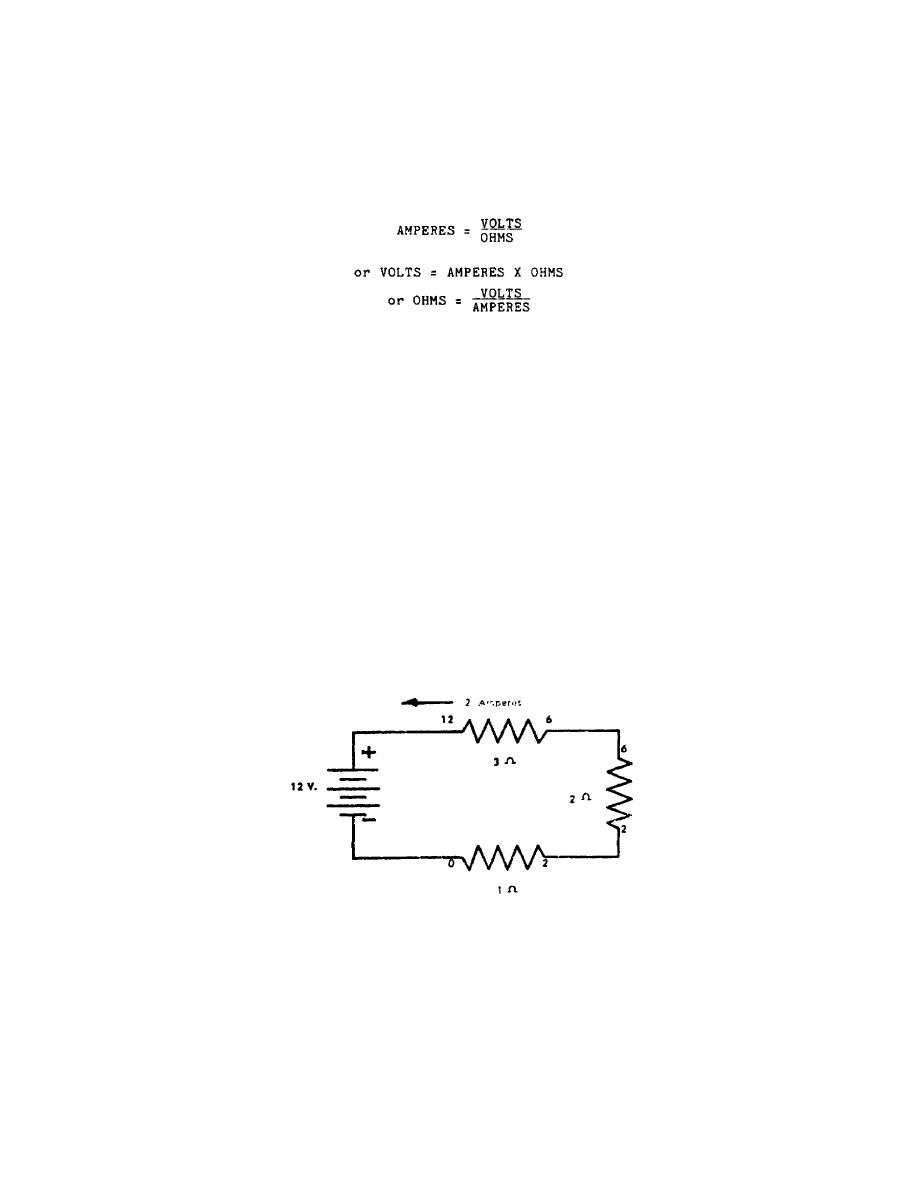
e. The voltage or electrical pressure needed to produce current flow in a
circuit is necessary to overcome the resistance in the circuit. Resistance to the
flow of current is measured in ohms. One volt will cause one ampere to flow
through a resistance of one ohm. This is an expression of Ohm's law (fig 3). A
resistor is an electrical device, often of metallic wire or carbon composition,
that presents a resistance or opposition to the flow of electric current. The
resistance is measured in ohms. When current passes through a resistor, a voltage
drop appears across the resistor. Ohm's law applies to an entire circuit or to any
part of a circuit.
Figure 3.
Ohm's law.
f. When three resistors are connected to a battery as shown in figure 4,
the total circuit resistance is six ohms. In applying Ohm's law to the entire
circuit, the current flow through each resistor is two amperes. Applying Ohm's law
to the one-ohm resistor, the voltage drop across the resistor is two volts. The
voltage potentials across this resistor and the other resistors are shown. Note
that electron current flow is shown in figure 4. Negative charges are assumed to
flow from the negative terminal of the battery, through the external circuit, and
back to the positive terminal of the battery. There are three important things to
remember about a resistor:
(1) A resistor will limit current flow according to Ohm's law.
(2) Voltage drop occurs across each resistor according to Ohm's law.
(3) The voltage drops across the resistors determine the potentials on
each side of the resistors.
Figure 4.
Series circuit.
OS 010, 1-P3




 Previous Page
Previous Page
